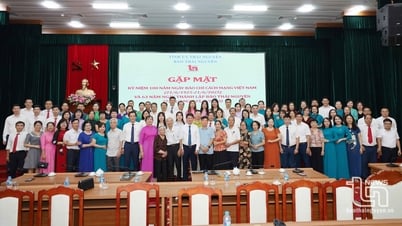
Sawaco's water supply system operation center - Photo: QUANG DINH
Digital transformation is being mentioned in many places. However, the awareness and understanding of some implementers are still limited; civil servants and data are not connected, shared, and exploited well, which are obstacles to the digital transformation process.
How can authorities at all levels exploit and use data to successfully implement digital transformation?
Is scanning documents digital?
There have been some misconceptions in the digital transformation process over the past years.
Some people consider digital transformation as bringing technology into the work process, using as much software as possible to replace the work of officials and civil servants. Or they consider scanning documents as digitalization; scanning documents and records of businesses and people and then saving them on computers or Google Drive.
There are apps and software, but many apps are just digital shells while the core is still manual. Internally, the business processes of functional agencies and procedures for providing public services remain the same; utilities and information are poor, and public administrative procedures have not been put on the app.
Another reality is that many professionals are not proficient in technology, while technology professionals are not proficient in their expertise, leaving digital transformation to the IT department.
There are agencies and localities that consider digital transformation as a short-term project, purchasing equipment and then finishing it, with the expectation that after a few months they can see immediate results.
There are agencies and localities that are applying technological solutions in a fragmented and unsynchronized manner; in some cases, they even create additional "bottlenecks", reducing efficiency and performance.
Applying software in providing public services but user experience (citizens, businesses) has not been improved; while officials and civil servants still face many difficulties.
Digital transformation is a process that requires changing management thinking, organizational culture, and creating new operating models based on "Digitization" - making everything measurable, countable and calculable; and Digitalization - using technology such as software and tools to improve existing processes, increase speed, and reduce costs.
Identifying and correctly solving the digital transformation problem is an appropriate approach, based on a thorough analysis of the following aspects:
- Identify the need to apply digital technology according to specific tasks of state agencies (for example, to perform administrative procedures online).
- Identify the application potential and specific risks of systems and tools to perform the tasks of state agencies.
- To what extent is the capacity of state agencies in terms of infrastructure, data, human resources, and financial resources currently adequate to apply technology?
Data: Measurable, countable, calculable
Data is everywhere in the public sector - the number of people accessing public service portals; the needs and behaviors of public service users; administrative processes and procedures; and the performance of officials and civil servants.
But the biggest challenges here are the lack of a clear vision, accompanied by an action plan, setting priorities for data exploitation; lack of awareness and lack of specific measures to protect data security, especially personal data.
In many cases, data has not been used much in the operations of state agencies.
In some places, people and businesses still have to fill in the same information multiple times when doing administrative procedures because the rate of data reuse on records and results of administrative procedure settlement is still low.
The lack of connection and data interconnection is a major obstacle for agencies from central to local levels in utilizing data for digital transformation.
Using data properly, measurable, countable and clearly calculating everything, every activity of state agencies will become easier and more effective.
Data such as the number of children born, the number of students enrolled each year, and the number of primary schools in the area can be aggregated and analyzed to make decisions about school planning.
If every civil servant and every agency uses, synthesizes and analyzes data, the exploitation and use of resources will become much more effective.
Source: https://tuoitre.vn/lam-chuyen-mon-khong-thao-cong-nghe-lam-cong-nghe-khong-ranh-chuyen-mon-chuyen-doi-so-ra-sao-20250609140514965.htm





























































































Comment (0)